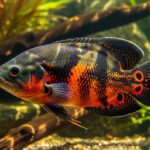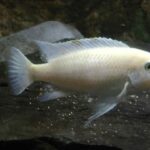Betta fish—also called Siamese fighting fish—are easily some of the most eye-catching and personality-packed pets you can keep in a freshwater tank. With their vibrant colors, flowing fins, and curious (sometimes feisty) nature, it’s no wonder they’ve become a favorite among both beginner fish keepers and seasoned hobbyists.
But there’s more to these stunning fish than meets the eye. Bettas come in a wide variety of types, each with its own unique combination of fin shapes, colors, and even personalities. Some are graceful and mellow, while others are full of sass and flair.
Whether you’re new to the aquarium scene or you’re on the hunt for something truly one-of-a-kind for your setup, getting to know the different kinds of bettas can help you find the perfect match.
Let’s take a closer look at the amazing variety of betta fish breeds—and help you discover the one that’s just right for you.
Understanding Betta Varieties
Betta fish aren’t actually classified into “breeds” in the traditional mammalian sense, but rather varieties based on traits like:
- Fin shapes
- Color patterns
- Scale types
- Behavioral tendencies
Breeders are constantly combining features to create beautiful new varieties, and since these categories frequently overlap, you may encounter a “Koi Plakat Betta” or a “Dragon Scale Halfmoon.”
There are many different types of betta fish, each identified by its color, pattern, and fin shape. Koi Bettas, Halfmoon, Crowntail, and Plakat are a few of the most well-known and eye-catching.
Fin Shape Varieties
1. Halfmoon Betta
The Halfmoon Betta is famous for its dramatic, fan-like tail that spreads 180 degrees when flared—shaped like a capital “D.” These fish are the supermodels of the betta world, with graceful, symmetrical fins that flow like silk in the water. They are best kept in low-flow tanks to prevent fin damage.
Ideal For: Display tanks, photography, and experienced owners (fins can be delicate).

2. Crowntail Betta
As the name suggests, Crowntail Bettas have spiky, crown-like fin edges. Their rays extend beyond the fin webbing, giving them a jagged, regal look. These bettas are bold, both in appearance and often in behavior.
Ideal For: Aquarists who enjoy dramatic and edgy aesthetics.
3. Plakat Betta
The Plakat is a throwback to the betta’s original wild form. With shorter, stronger fins and a muscular body, Plakats are agile swimmers and were historically bred for fighting. Today, they’re appreciated for their health, hardiness, and no-fuss look.
Ideal For: Beginners, community tanks (with caution), or those preferring a more active fish.
4. Veiltail Betta
Probably the most commonly seen type in pet stores, Veiltail Bettas have long, downward-flowing fins that trail like a luxurious veil. They’re hardy and easy to care for, making them a popular first-time betta.
Ideal For: Beginners and classic betta lovers.
5. Doubletail Betta
Doubletail Bettas feature two distinct tail lobes, which make them stand out from other varieties. These fish often have larger, broader dorsal fins, giving them a balanced and full appearance.
Ideal For: Collectors looking for a unique shape.
6. Elephant Ear (Dumbo) Betta
Named for their oversized pectoral fins that resemble elephant ears, Dumbo Bettas are gentle in appearance and absolutely adorable. Their large fins make swimming a little harder, so they’re best kept in still waters.
Ideal For: Aquarists who appreciate personality and whimsy.
7. Rosetail Betta
A variation of the Halfmoon, the Rosetail Betta has even more branching in its rays, giving its fins a ruffled, rose-like look. While beautiful, their extreme fins can be more prone to injury or fin rot.
Ideal For: Advanced hobbyists ready to provide delicate care.
8. Combtail Betta
Also sometimes grouped with Crowntails, Combtails have elongated rays that give a comb-like appearance—but with more webbing than Crowntails. They’re a great in-between option if you like a bit of flair but don’t want overly delicate fins.
Ideal For: Anyone looking for a mix of drama and durability.
9. Delta and Super Delta Betta
These bettas have a triangular-shaped tail that doesn’t quite reach the full 180-degree spread of a Halfmoon. Super Deltas are just a step below Halfmoons in fin span. They’re less prone to damage and often come in beautiful color variations.
Ideal For: Hobbyists who like symmetrical fins but prefer hardier fish.
Color and Pattern Varieties
Betta color variations can be just as exciting as fin shapes. Let’s explore the most eye-catching ones:
1. Koi Betta
Inspired by the beloved pond fish, Koi Bettas display blotchy patterns of red, black, white, orange, and sometimes blue. Each fish has a one-of-a-kind pattern, often changing over time due to the marble gene.
Fun Fact: No two koi bettas look the same!
2. Butterfly Betta
These bettas have a body of one color and fins that end in a contrasting, usually white or clear band—like butterfly wings. The visual effect is stunning, especially in Halfmoons and Super Deltas.
Eye-Catching Colors: Blue/white, red/white, or even multicolor blends.
3. Dragon Scale Betta
Dragon Scale Bettas have thick, metallic-looking scales that seem to “armor” the body—usually in bold shades like copper, white, or red. Their vivid, iridescent appearance gives them a fantasy-like charm.
Ideal For: Fans of dramatic and exotic-looking fish.
4. Marble Betta
Marble Bettas are like little abstract paintings in motion. They feature blotchy patterns that change over time, sometimes drastically. Thanks to their genetic makeup, you may wake up to find your betta looking completely different!
Tip: Their unpredictability is part of the fun.
5. Bi-Colored Betta
Simple yet striking, these bettas have a body of one color and fins of another. Common combinations include red/white, blue/black, and even green/yellow.
Perfect For: Minimalists who still want some color pop.
6. Cambodian Betta
This classic look features a pale or flesh-colored body with bright red or blue fins. Though less common today, they remain a nostalgic favorite among traditionalists.
7. Alien Betta
These hybrid bettas are a mix of wild species, giving them unique traits like iridescent scaling, different body shapes, and cooler temperaments. Often, Alien Bettas are green or blue with a sheen that shimmers in light.
Note: They are more sensitive to water changes and stress.
8. Mustard Gas Betta
With a dark body (often blue or black) and yellow-orange fins, this variety is as fiery as its name suggests. It’s a bold and contrasting look that stands out in any tank.
Other Notable Varieties
Peaceful Betta (Betta imbellis)
Unlike the typical aggressive Siamese fighting fish, Betta imbellis—or the crescent betta—is known for its calmer nature. These are better suited for community tanks and often display a red crescent on their tail.
Important: Still semi-aggressive, so tank mates must be chosen carefully.
Choosing the Right Betta for You
When selecting a betta, consider:
- Fin Type & Care Needs: Longer fins look great but are delicate.
- Color Preferences: Are you drawn to bold contrasts, subtle blends, or metallic scales?
- Activity Level: Plakats are active swimmers; Rosetails are more ornamental.
- Tank Setup: Some varieties do better in still waters, others are stronger swimmers.
Also, keep in mind that some bettas, especially fancy types, may require more attentive care, including frequent water changes, a low-current environment, and protection from sharp tank décor.
Here are the other few things to consider before picking out your betta:
- Do you want a low-maintenance betta? → Try Plakat or Veiltail.
- Love a showstopper? → Go for Halfmoon, Rosetail, or Dragon Scale.
- Prefer something unusual or rare? → Look for Alien, Koi, or Mustard Gas varieties.
- Beginner or nervous about care? → Stick with short-finned or hardier types like Plakats.
No matter the variety, all bettas need the same loving care to thrive.
Betta Fish Care Checklist
Here’s a practical, no-fluff checklist to help you care for your betta like a pro.
Tank & Water
- Tank Size: Minimum 5 gallons (bigger is better!)
- Heater: Keep water between 76–82°F (24–28°C)
- Filter: Gentle flow—bettas don’t like strong currents
- Water Conditioner: Always treat tap water to remove chlorine
- Weekly Water Changes: 25–30% for smaller tanks
Feeding
- Feed 1–2 times daily, no more than they can eat in 2 minutes
- Offer variety: pellets, frozen or live brine shrimp, bloodworms
- Skip feeding 1 day a week to prevent bloating
Tank Setup
- Soft silk or live plants—no sharp décor
- Provide hiding spots (caves, leaf hammocks)
- Keep tank covered—bettas can jump!
Behavior & Health
- Observe daily: Active? Eating? Colorful?
- Look for fin clamping, dull color, or inactivity
- Treat fin rot, ich, and swim bladder issues quickly
Pro Tips
- Avoid placing tanks in direct sunlight
- Use a gentle LED light on a timer (8–12 hours per day)
- Keep the tank environment calm—bettas don’t like sudden vibrations or noise
Frequently Asked Questions (FAQs)
Q: Are all betta fish aggressive?
Not all bettas are equally aggressive. While males of the Betta splendens species are known for territorial behavior, some varieties like Plakat or Betta imbellis are less hostile, especially when housed properly.
Q: Can different betta varieties be housed together?
In general, it’s not safe to house male bettas together, regardless of variety. Female bettas may live in sororities (groups), but this requires experience and careful monitoring.
Q: How long do bettas live?
With proper care, bettas live around 3–5 years on average, though some can live longer with excellent conditions.

Q: Do color-changing bettas exist?
Yes! Bettas with the marble gene (especially Marble and Koi Bettas) can change color throughout their lives. It’s perfectly natural.
Q: Can I use a bowl instead of a tank?
It’s strongly discouraged. Bowls are too small, can’t be heated properly, and don’t allow for filtration—leading to poor water quality and health issues.
Q: What tank size is best for a betta?
A 5-gallon tank is the minimum recommended size. Larger tanks provide better water stability and more room to swim.
Q: Do bettas get bored?
Yes! They’re smart and benefit from enrichment like floating toys, mirrors (used briefly), or rearranged tank décor.
Final Thoughts
Whether you’re drawn to the elegant flow of a Halfmoon, the rugged charm of a Plakat, or the mesmerizing shimmer of a Dragon Scale, bettas offer a dazzling world of diversity. With so many fin types, colors, and personalities to choose from, there’s truly a betta for everyone.
Taking the time to learn about the different varieties not only helps you pick the right fish—it helps ensure your betta lives a long, healthy, and vibrant life.
So go ahead—choose your favorite, set up a cozy tank, and let your betta’s colors brighten your day.






